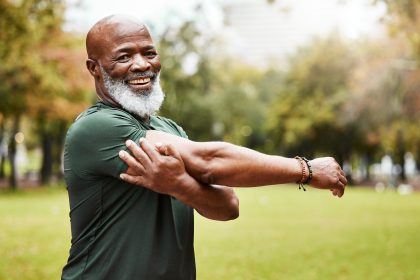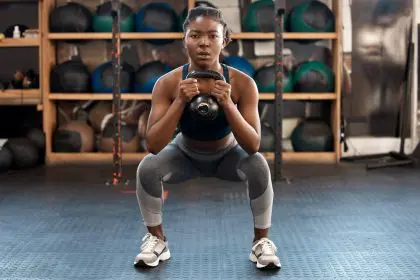The way aging is assessed is undergoing a shift as researchers uncover a simple but revealing physical test. Traditional fitness measures such as endurance and strength have long been used to evaluate overall health, but new findings suggest that balance may be a more accurate predictor of biological age. The ability to stand on one leg for a set amount of time has emerged as a critical marker, providing insight into longevity and overall physical function.
This discovery challenges common perceptions of fitness by highlighting the role of stability in long-term health. While cardiovascular fitness and muscle strength remain important, the ability to maintain balance appears to be a strong indicator of how well the body is aging.
What makes balance a key health indicator
Balance relies on multiple systems working together, making it a valuable measure of overall health. Maintaining stability involves input from the visual, muscular, and neurological systems. A decline in any of these areas can make it harder to stay upright, and research suggests that diminished balance may be an early warning sign of declining health.
Studies examining people over 50 have shown that the ability to hold a single-leg stance is strongly correlated with mortality risk. Individuals who struggled with the test were found to have a significantly higher chance of experiencing major health issues in the following years. This connection suggests that balance is not just about coordination but also about how well different body systems are functioning together.
How aging affects balance over time
As people age, their ability to maintain stability declines in a predictable pattern. Studies tracking balance performance over decades have found a steady reduction in single-leg stance time. On average, stability on the dominant leg decreases by nearly two seconds per decade, with the non-dominant leg experiencing an even sharper decline.
This pattern is seen across different groups, regardless of gender, and suggests that balance could serve as a universal aging marker. Unlike other physical attributes that can vary due to lifestyle choices or genetics, balance appears to deteriorate at a consistent rate as the body ages.
The implications of these findings go beyond simple physical fitness. The ability to stay balanced affects daily activities, from walking to avoiding falls, which become a leading cause of injury in older adults. Understanding balance as a health metric allows for earlier intervention, potentially preventing future complications.
The link between balance and longevity
Struggling with balance may indicate underlying health risks that extend beyond simple coordination issues. Research has found that individuals unable to maintain a 10-second single-leg stance are at greater risk for a range of conditions, including cardiovascular disease and neurological decline. The body’s ability to regulate movement is closely tied to brain function, meaning that balance problems could signal more significant issues within the nervous system.
A lack of stability can also contribute to a higher likelihood of falls, which become increasingly dangerous with age. Falls are a leading cause of injury and hospitalization among older adults, and poor balance significantly raises the risk. By identifying balance deficits early, individuals can take proactive steps to strengthen stability and reduce potential hazards.
Simple ways to improve balance and stability
Balance is a skill that can be developed, and regular practice can help maintain stability over time. Unlike some aspects of physical decline that are difficult to reverse, balance can be improved through targeted exercises. Standing on one leg for short intervals each day can gradually enhance coordination and control.
For those looking to challenge their stability further, incorporating activities such as tai chi, yoga, or even simple heel-to-toe walking can strengthen the muscles involved in balance. Strength training, particularly exercises focusing on the core and lower body, can also provide additional support for stability.
Healthcare professionals suggest that being able to hold a single-leg stance for at least 30 seconds is a strong indicator of good balance. This benchmark provides a clear and achievable goal for those looking to maintain or improve their stability over time.
What this means for the future of health assessment
Recognizing balance as a crucial health indicator could change the way fitness and aging are evaluated. Traditional measures such as strength and endurance remain valuable, but the addition of balance testing provides a more comprehensive view of overall well-being.
By incorporating balance exercises into daily routines, individuals can take proactive steps toward preserving their mobility and reducing the risk of injury. With further research, balance testing could become a standard part of medical assessments, helping to identify potential health concerns earlier.
This growing understanding of stability as a key aging marker reinforces the importance of maintaining balance, not just as a physical ability but as a fundamental component of long-term health.














